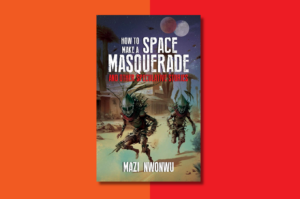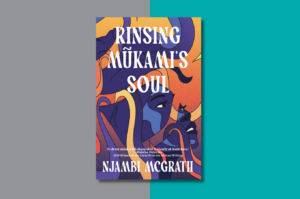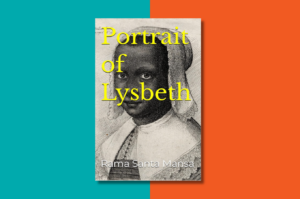
A Preamble
It is essential – and honest – to begin with an admission: my position has hardened. Between 1965, when the CIA cultural infiltration scare first hit our complacencies as aspiring protagonists of an elusive African vision, and today, when the revisionist brigade of academia, both within and outside the continent, has taken to re-situating those contributions through their own proprietorial, often distortive lenses on Third World figures, my position has moved from mere impatience and irritation at these serial eruptions, to outright resentment, rejection and disgust. To be explicit, one began with a realistic concession that unseen hands, pursuing their own murky interests, did contribute in some ways, tangential to substantial, to the careers of African cultural producers who have since become highly reputed all over the world today. I have however moved to examining such claims more closely and objectively. I have drastically cut down the hitherto conceded share of such entitlement and, in most cases, reject them in entirety.
The burden of proof is on such claimants and must be incontestable, permitting no plausible counter-claims. Evidence is mandatory. With the benefit of thousands of encounters with established writers, composers, artists, scientific researchers and pioneers in productive vocations across the globe, across cultures and political systems for over half a century, I find myself quite at ease with the trite observation that the phenomenon of creative patronage does indeed form one end of a universal and historic axis, that all attempt to regard it as esoteric and suspect is a waste of mind. Together, the artiste-patron axis often propels crucial motions of social development and transformation.
Motivations differ of course, just as does the destination. The relationship forms a legitimate zone of enquiry. The findings in any one case study however do not impose a structure of universal applicability. Any such approach betrays an alienated, lazy, and opportunistic predisposition, even more contemptible than the murkiest motivations that drive the patronage end of the axis. That end-use agenda is not a reliable indicator of the disposition of the recipient nor, even more critically, of the intrinsic value, nature or validity of the resultant product – in any medium. Art and literary histories are littered with narratives to the contrary, leading often to terminal ruptures along the collaborative axis. This of course imposes on any enquirer the labour of a meticulous fidelity to facts, avoidance of glib inferences and stubborn retentions of jaundiced perspectives – in short, intellectual integrity.
However humbling to the power of appropriation and authoritarian tendencies, the product takes central place, a commanding entity, albeit in turn vulnerable to multiple influences and levels of individual consciousness. The most accessible and glibly touted of these need not be the dominant. Creativity is essentially thinking, then making ‘outside the box’, indeed, sometimes outside multiple boxes. This demands, of any would-be analyst, the ability to see the product firstly as a thing-in-itself, not what it is bound to be, once assigned an umbilical cord of real or imagined ‘assisted emergence.’ Folk wisdom such as ‘he who pays the piper….’ is a facile cop-out that illicitly forecloses the admittance of other determining, contributive factors – a whole world of unsung, self-effacing providers. A preference for anonymity – for whatever reason – is a solidly entrenched feature of the productive culture, undermines any eager, gloating assumption on who ‘… dictates the tune’.
Thus, the presumptuous conviction of a product being ‘bound to be’ this or that, exists largely in the narrator’s own theoretical baggage of cause-and-effect, which is equally an acquisition of his or her own conditioning, the absorption, often ill-digestion of propositions in the realm of ideas, at worst – dogma. You cannot will the product away from its replete existence. However seemingly obliging, inert, however abstract, it has emerged as a produced entity, and those who approach it out of curiosity, desire, consumption, acquisition or conversion – critics and analysts especially – cannot escape the primacy of sequence. Of necessity, they must see it first, as a product potentially outside their own borrowed, circumscribed and external frames of perception and reference. Let the foregoing remain in the foreground especially of incursions into the material of distanced histories of creative production, be this of time or geographies.
Opinionated occupants of that specified, mined zone of literary history, however, prefer to flounder in a time warp, ignoring, dismissing or prejudicially selecting from findings of the past industry of others. This saves them the labour of a holistic apprehension of past events – and developments – within the creative enterprise. The result is that they reveal themselves as little more than scaremongers. Their mission is to insert phobia where the same reference points no longer amount to public alarm. They whip up the dehydrated froth of long discarded milk to suggest that child poisoners are still alive and on a rampage. For these, the world has stood still. Despite such antics, however, that time is long past when even the mere admission of knowledge of the existence of a sinister organisation called the CIA was in itself cause for suspicion and panic, when the burden of proof of innocence was placed on the passing pedestrian on whom the shadow of a later identified secret agent once wobbled.
For survivors of the ‘transitional era’ of liberation and independence struggles, if, by any chance, encroachment on their lives and careers by the hydra-headed, almighty agency of ‘Satanic Power’ still constitutes a kiss of death, it is no longer a promiscuous kiss that can be bestowed vicariously by any new generation offshoot of the proprietorial race for a third ‘scramble for Africa’, this time by sloppy scholars and middling poets* striving to outdo one another in the demonisation of a past generation who lived through the process. The Frankenstein monster let loose may yet act true to type – destroy its re-animator.
We can, however, do ourselves one favour, and that is – attempt to induct them into a broader awareness of the unique field of Power and Influence of that era, tutor their partial grasp of such times and deepen the shallowness of their constricted vision. One becomes bored, indeed sickened by the repeated exhumations of allegations that have long been addressed, thrashed and tossed back on the disposal mounds of numerous Cold War casualties. It falls on survivors to check the wholesale ingestion of lies by new entrants into the fray, use each spate of provocation to expand awareness of the physically invested fields of rivalry in some sample far-flung worlds of the affected. We can expose some obscured – willfully or time smudged – features of some of those arenas, be they typical or exceptional. For now, here is a December 2020 resurrection bid – the year of COVID-19 – to keep in the back of our minds:
Juliana Spahr alleges that Soyinka had unusually close ties to the US government, even to the point of frequently meeting with US Intelligence in the late 1970s.
There is a distinct breed of academics who, when they mount the rostrum waving a smoking gun, the wise first check what they themselves have been smoking. Unlike the medical profession, the Humanities do not boast formalised disciplinary associations that can drum out or ostracise members for malpractice. Nor a Bar Association that routinely tries and disrobes its crooked practitioners. The Humanities are thus laid wide open for any kind of misfit and unscrupulous interloper, leaving their victims recourse to those very sister professions for remedy – sudden heart stoppage from a massive lie offensive, and/or meagre recompense in the court for libel. Usually, the villain gets away with a bulging notoriety swag, moves on to line up the next victim in full confidence of impunity.
Buy Trumpism in Academe here.
**********
*Caroline Davis: African Literature and the CIA: Networks of Authorship and Publishing. Cambridge University Press, 2021.









Afelumo Foluso Bamidele June 27, 2021 07:56
Look at this statement and edit, please: " I have drastically cut down the hitherto conceded entitlement and, in most cases, reject (sic) them in entirety" Can you please draw the attention of our quintessential and iconic Nobel laureate to it for correction, please? Lastly, can you link me up with him to help review my poems before I publish them? I am a medical Practitioner. Thanks a million.